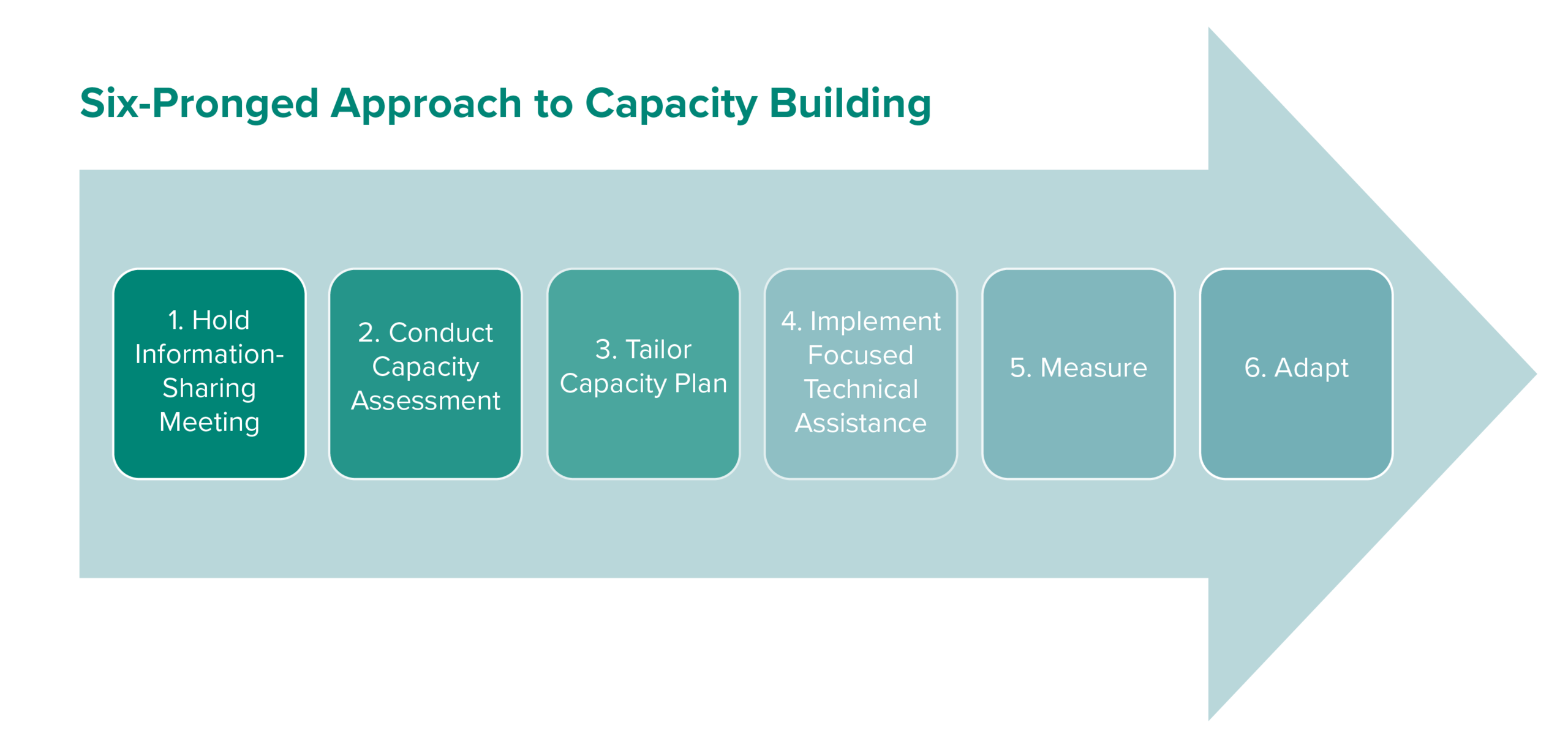Capacity to Impact Model
The Elizabeth Glaser Pediatric AIDS Foundation (EGPAF) Capacity to Impact model is our results-driven approach to working with local organizations on improving their unique HIV outcomes.
To build successful organizational and technical capacity, the Capacity to Impact model combines comprehensive review and trust using a six-pronged approach.
Guiding Principles of Capacity to Impact
Organizational capacity development support should translate into results. High organizational capacity alone is insufficient if it does not translate into improved health outcomes for the intended beneficiaries.
Each organization is unique. Although it is important to use standardized, broad approaches for civil society organization strengthening, organizational development support must be tailored to meet the individual objectives, needs, and potential of organizations of various sizes, scopes, and capacity.
Effective organizations require comprehensive capacity. To make a sustainable impact on health outcomes, organizations require comprehensive administrative, operational, governance, and programmatic capacity, grounded in a culture of continuous improvement and innovation.
Organizational development support is an opportunity for mutual learning. Through its collaboration with a variety of unique national civil society groups, EGPAF gains insight into new programmatic approaches, technical expertise, and innovations to be used for continual growth.
Organizational development is nonlinear and is a continual process. For this reason, organizational development approaches must be adaptive and responsive, and allow adequate time for change.
Organizations must own their development. Organizations need to own the capacity-building process and trust the TA provider if successful TA implementation and sustained change is to occur.
Six-Pronged Approach to Capacity Building
Hold Information Sharing Meeting
Conduct Capacity Assessment
Tailor Capacity Plan
Implement Focused Technical Assistance
Measure
Adapt

Key Results of the Capacity to Impact Approach
- We implemented the Capacity -> Impact model in a community-based organization in Malawi and one in Kenya. We launched an organizational capacity assessment tool in both settings early in implementation to assess needs and determine overall efficiency and effectiveness. Using a scoring system, we used the results of the tool to provide training and mentorship in the design and development of structured data systems to help accurately monitor and evaluate the progress of project activities over time. Post-technical assistance, the organizations have increased their use of data to review performance and make informed decisions to improve their project outcomes. The enhanced data systems have improved their capacity to report to their national AIDS control council, as appropriate.
- Within a year, five Malawi-based community-based organizations increased their capacity assessment score by an average of 48%. The biggest gains were seen in award and sub-award management and monitoring and evaluation.
- In Kenya, this same organizational capacity assessment tool identified a need to improve the governance and leadership capacities. Our customized TA enhanced the community-based organization’s board leadership capacity to provide strategic direction by defining board structures, board recruitment procedures, clear roles and responsibilities of members, conflict-of-interest-reduction policies, separation procedures, and succession plans.
